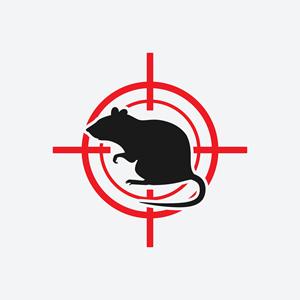
By: James Rodriguez, Technical Director at JT Eaton
(1) Locate food source:
Rodents’ sense of smell is about 10 times greater than a dog, so is important to locate, remove and control any rodent food sources. Involve your customer in this process to avoid future problems.
(2) Harborage and entry points:
Following air movement and heat is easier than looking for rub marks, droppings and nesting locations. Inspect areas where warm air escapes from vents, around pipes, roofs & under doorways.
- Excess debris from trash, leaves and over-growth from groundcover provide protective cover and warmth for nesting areas.
- Seam lines of buildings (along concrete or asphalt) hold heat from the sun, and are great run paths for rats and mice. Follow those lines!
- Heat-sensing cameras are useful, and give a good overview of potential entry points, especially in winter. Sealing and preventing heat from escaping a building helps prevent rodents.
(3) Eradicate Rats and Mice:
Rodents are very cautious, so using more than one type of device can increase your success. Outdoors, rodent management devices, including bait stations, should be placed along property perimeter areas at spacing intervals of 50-100 feet depending on rodent activity levels.
JT Eaton™ offers the Super Strongbox™ series of bait stations with powder coating and paver options that are great for perimeter areas. Stainless steel station #125403 also comes in a built-in, weighted paver option for easy, secure installation #125418. In addition to bait stations outdoors, the inside of any exterior wall should also have rodent traps at the rate of one every 20 feet for mice and every 40 feet or more for rats. Traps should also be added adjacent to doors, docks, and ramps, but may be placed adjacent to any exterior opening per company practices. The JT Eaton™ Super Strongbox™ stations have removable insert trays that are pre-molded for use with Jawz™ rat and mouse traps, and Stick-Em® glue boards. These stations can also be used indoors for trapping. Both station version are also available in a black powder coating option that is chip, impact, abrasion and corrosion resistant. It is also Muriatic Acid, Nitric Acid and detergent cleaner resistant to keep your bait stations looking new longer. The paver version is #125421 and the standard powder coated version is #125412. The Integrated Pest Management (IPM) approach explained above will yield the best results in your rodent control program.
A final note: Rodents and their droppings can carry diseases and contaminate surfaces. Use caution when approaching any live or dead rodent. Always be aware that rodent droppings pose some hazard, big or small. Salmonella, Leptospirosis, Hantavirus Pulmonary Syndrome and Plague are still common rodent diseases. Protecting your customers, pest technicians, the public and yourself begins with knowledge:
- Log on to www.CDC.gov to find rodent diseases in your area.
- Have a program to identify areas where rodent droppings accumulate.
- Entering confined spaces with rodent evidence requires use of respirators and decontamination procedures.
- Removing rodent droppings requires understanding of decontamination procedures and using protective gear.

